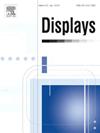基于美学数据集构建和层次特征融合的图像质量盲评价
IF 3.7
2区 工程技术
Q1 COMPUTER SCIENCE, HARDWARE & ARCHITECTURE
引用次数: 0
摘要
由于深度学习技术的快速发展,盲图像质量评估(BIQA)取得了重大进展。然而,BIQA问题的目标仍然模棱两可,通常从两个角度进行探讨:技术角度,评估对扭曲的感知;美学视角,侧重于内容偏好和推荐。大多数现有的研究主要集中在技术角度上,相对较少的研究涉及美学角度。为了解决这一问题,本文提出了利用美学数据集构建和层次特征融合的美学-技术聚合质量评估(ATAQA)框架。具体来说,为了增强美学表达,我们首先设计了预训练的美学技术聚合(PATA)策略,该策略通过图像美学质量数据集(IAQD)提高了美学特征学习的能力。此外,我们设计了密集特征聚合(DFA)模块,该模块将变压器特征分层地集成到质量感知特征表示中,使模型能够从低到高地利用视觉信息。在几个IQA数据集上的广泛结果表明,ATAQA显著优于当前最先进的(SOTA)方法。我们的代码将在论文被接受后提供。本文章由计算机程序翻译,如有差异,请以英文原文为准。
Blind image quality assessment via aesthetic dataset construction and hierarchical feature fusion
Blind image quality assessment (BIQA) has significantly progressed due to rapid advancements in deep learning techniques. However, the objective of the BIQA problem remains ambiguous and is typically approached from two perspectives: the technical perspective, which evaluates the perception of distortions; and the aesthetic perspective, which focuses on content preference and recommendations. Most existing studies predominantly focus on the technical perspective, with relatively few studies addressing the aesthetic perspective. To address this problem, this paper proposes the Aesthetic-Technical Aggregation Quality Assessment (ATAQA) framework by leveraging aesthetic dataset construction and hierarchical feature fusion. Specifically, to enhance aesthetic expression, we first design the Pre-trained Aesthetic-Technical Aggregation (PATA) strategy, whose capabilities for aesthetic feature learning are improved by the Image Aesthetic Quality Dataset (IAQD). Further, we design the Dense Feature Aggregation (DFA) module, that integrates the transformer features hierarchically into the quality-aware feature representation, enabling the model to utilize visual information from low to high levels. Extensive results on several IQA datasets demonstrate that ATAQA significantly outperforms current state-of-the-art (SOTA) methods. Our code will be available after the paper is accepted.
求助全文
通过发布文献求助,成功后即可免费获取论文全文。
去求助
来源期刊

Displays
工程技术-工程:电子与电气
CiteScore
4.60
自引率
25.60%
发文量
138
审稿时长
92 days
期刊介绍:
Displays is the international journal covering the research and development of display technology, its effective presentation and perception of information, and applications and systems including display-human interface.
Technical papers on practical developments in Displays technology provide an effective channel to promote greater understanding and cross-fertilization across the diverse disciplines of the Displays community. Original research papers solving ergonomics issues at the display-human interface advance effective presentation of information. Tutorial papers covering fundamentals intended for display technologies and human factor engineers new to the field will also occasionally featured.
 求助内容:
求助内容: 应助结果提醒方式:
应助结果提醒方式:


